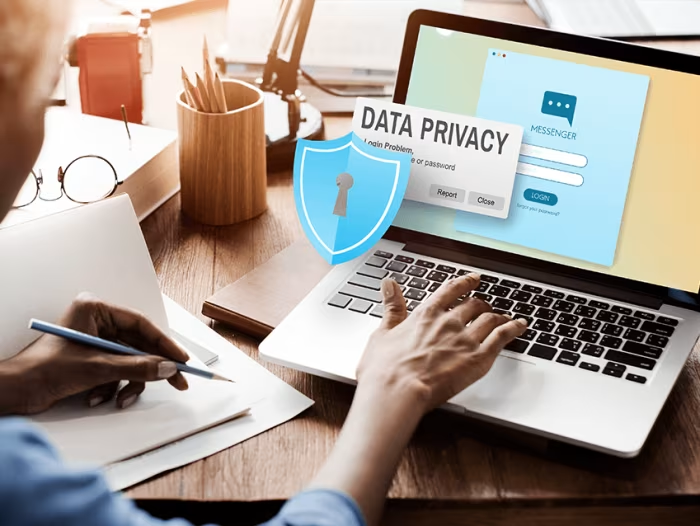Resource / Online Journal
Top 5 DDoS Attacks on the Education Sector in 2024: A Critical Review
In this hyper-digital world, even educational sectors are at high cyber risks. Know more about some of the DDoS attacks of 2024.
Published on Apr 28, 2025

Introduction to Cyber Threats
The education field has become a prime target for cyber threats, and a big part of that is Distributed Denial of Service (DDoS) attacks. Due to a hike in digital sensitive data and online learning platforms, educational institutions are more vulnerable than ever.
Educational institutions possess personal data, financial transactions, and intellectual property. Thus, becoming an attractive target for cybercriminals. Cyber threats like phishing attacks, ransomware, etc., have developed in frequency and sophistication. As Check Point’s State of Cybersecurity 2025 Report suggests, the education sector saw over 3,574 weekly cyberattacks in 2024.
Among these, DDoS attacks are most harmful in nature. They tend to cripple essential services, disrupt academic operations, and create financial and reputational losses. Moreover, politically motivated DDoS attacks are another concern that is affecting the private as well as the public sector.
DDoS attacks in 2024
- Highline Public Schools saw a ransomware attack leading to the shutting down of all services.
- A ransomware attack targeted the Toronto District School Board, compromising the data of hundreds of pupils.
- The finance department of Parents Teachers Councils (PTC) in Khyber Pakhtunkhwa saw a data theft. It led to the loss of multiple pieces of confidential financial information.
- A Fog ransomware assault was carried out via VPN in the United States' educational system.
- The UK was also heavily affected by data breaches in educational institutions.
Understanding DDoS Attacks
A DDoS attack floods the network or server with massive traffic from multiple sources. These attacks are often done through botnets. The network of compromised devices is infected with malware threats and controlled remotely by attackers.
In the education industry, DDoS attacks are often launched to disrupt online classes, student portals, remote learning platforms, or data theft. They may be executed using stolen login credentials or injected malware through phishing emails and compromised software. The impacts can lead to financial losses, halted academic progress, canceled classes, or damaged reputations.
DDoS and Cybersecurity threats
DDoS cyber attacks include phishing emails targeting faculty and students. Remote learning platforms and online services as well become vulnerabilities for data breaches. The institutions often lack any proper cybersecurity posture. As a result, DDoS attacks are carried out without any cybersecurity protective measures.
Multi-vector attacks have now become easy, and mitigation is significantly harder. Educational institutions must strengthen all potential vulnerabilities with robust cybersecurity measures. Routine security audits and software patching can also reduce vulnerability.
Common Cybercriminals
Cybercriminals targeting the education sector include a wide range of threat actors. For example, lone hackers, organized crime groups, hacktivists, or nation-state-sponsored attackers.
These attackers exploit compromised credentials, unpatched systems, or malicious software. They often start with phishing attempts and lead to larger attacks. Educational institutions must understand the role of cybersecurity and improve security posture.
DDoS Protection and Prevention
DDoS protection starts with layered cybersecurity solutions with applications like firewalls (WAFs), intrusion detection systems (IDS), and anti-DDoS appliances.
IP blocking or geofencing to filter malicious traffic. A regular check on insider threats to protect sensitive information.
Advanced cybersecurity solutions, real-time monitoring, multifactor authentication (MFA), and secure password management can be implemented.
Building a security-conscious culture through awareness training is equally important. This helps for better response to any malware attacks.
Incident Response and Recovery
Having a comprehensive incident response and recovery plan makes a higher education institution secure. Just prevention while ignoring the plan that comes after any attack can be a vulnerability.
Response plans should be followed by identifying the attack, isolating affected systems, notifying stakeholders, and restoring services. Regular simulations and tabletop exercises can help to assess the plan's efficacy.
Backup systems must be updated and tested frequently to ensure data recovery in the event of prolonged outages. Institutions should also maintain proper contact with service providers during high-volume attacks.
In an age where downtime equals disruption in education, a well-documented and regularly updated incident response as a security measure is important. Recovery after any attack is also an important function for future performance or recovery.
Conclusion
The rise in DDoS attacks on the education sector in 2024 underscores a dire need for heightened cybersecurity awareness. Politically motivated disruptions to financially driven extortion attacks, the threat landscape is becoming more complicated and brutal.
Educational institutions must adopt a proactive stance that will employ advanced DDoS protection, understand evolving attack vectors, and prepare robust incident response plans. A failure to do so could result not only in financial losses or data breaches but also in the disruption of education for thousands of students.
Recommended articles


Education IT Security: Protecting Student Data and Institutional Information
Take Your Identity Strategy
to the Next Level
Strengthen your organization's digital identity for a secure and worry-free tomorrow. Kickstart the journey with a complimentary consultation to explore personalized solutions.